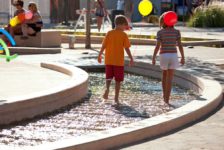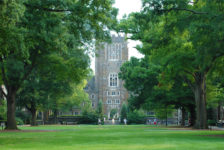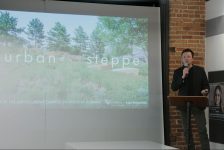Leisure Centre of Madine, by Urbicus, Versailles, France
Finding a balance point for a project located in a natural place involves listening carefully to the environment in order to preserve its essence. The Madine Lake — or Lac de Madine — in The River Meuse, France, is located in the heart of the Regional Natural Park of Lorraine, which is home to a great variety of local flora and fauna. It is one of the largest lakes in the country, with an 11,000-hectare stretch of water, 250 hectares of forest, and 42 kilometers of banks and shores. This beautiful setting has always been an attraction for European tourists and sport lovers, laying the groundwork for a perfect opportunity to develop a project that responds to the exigencies for responsible tourism.

The Leisure Center at Madine by Urbicus
Planning and Designing the Leisure Center at Madine
The Leisure Centre of Madine is the result of four years of negotiation among local authorities (Le Syndicat mixte d’amenagament du Lac de Madine, La Region Lorraine, Le conseil general de la Meuse, and le GIP objectif Meuse) to respect and protect the natural heritage of the site. The total investment of the renovation project is valued at 60 million euros, but only 14.5 million euros has been spent so far.

The Leisure Center at Madine by Urbicus
- The improvement of traffic routes, which aim to value and secure pedestrians and cyclists by isolating the flux of vehicles, setting them apart from the shoreline.
- The hierarchy of areas: The main poles in Nonsard and Heudicourt will revolve around themed areas for sport and wellness, outdoor leisure activities, and a lakeside village.
- The preservation of the site through taking into account environmental standards for development and construction.
- The attractiveness and diversity of activities gathered in one place: sports, beach, accommodations, concerts, events, etc.

The Leisure Center at Madine by Urbicus
- RheinRing Bridge is a Work of Art!
- Top 10 Pedestrian Bridges
- The Street Bridge Park Everyone’s Talking About
The port deepening will take into account the agreement signed by the partners to preserve local biodiversity. The protocol takes note of periods of low water flow and the reproductive needs of a number of fish species. The second phase includes the construction of accommodations and the rebuilding of the captaincy and enlargement of the port, as well as the development of private investments for local commerce.

The Leisure Center at Madine by Urbicus
Leisure Center at Madine Renovation: from Concept to Reality
The complex designed by Urbicus Studio, headed by French architect Jean-Marc Gaulier, has created a unique architectural response that fuses with the landscape in a harmonious way. The studio was founded in 1996, and the team developed a term – Naturbanity — which refers to dealing with urban issues in terms of “architecture of the land area”. In other words, the team strives to design in such a way as to protect nature from urban and tourist pressure by leaving the landscape as natural as possible, re-establishing an ecologically healthy relationship between nature and culture. An Ambition Shared by Everyone for the Leisure Center at Madine Having been a natural area for a long time, the park remains flexible, moving at the pace of the demands of tourism but with a responsible attitude. This is reflected in the selection of natural materials used in the project, such as wood, rusty steel, gravel, and fine sand that increase the sensation of being in a natural atmosphere, little intervened by man. The Leisure Centre at Madine is defined by subtle architectural strokes. A curvy complex inspired by water movement is the guideline that organizes the whole building program. The complex is perceived as a great unit; the wooden promenades elevate from the ground and become the roof of the main building — Maison de la Promenade — where pedestrians can walk above or below.

The Leisure Center at Madine by Urbicus

The Leisure Center at Madine by Urbicus
- Site Engineering for Landscape Architects by Steven Strom
- The Artful Garden: Creative Inspiration for Landscape Design by James van Sweden
Article by Claudia Canales Return to Homepage
Published in Blog










